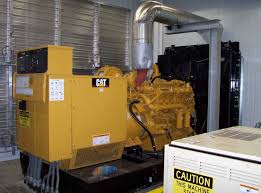 I recently received a question regarding emergency generator testing in a medical facility that touched on testing frequency and what defines a method of off site monitoring. Here’s the question:
I recently received a question regarding emergency generator testing in a medical facility that touched on testing frequency and what defines a method of off site monitoring. Here’s the question:
My local AHJ expects my Ambulatory Surgical Center (ASC) to run the generator weekly. They utilize NFPA 1 (2012) and NFPA 72 (2010). Both NFPA 1 in table 13.7.3.2.4 (line 4) and NFPA 72 in table 14.4.5 (line 4) reads as: Testing Frequencies
Initial/Acceptance Monthly
Engine-driven generator-Central Station Facility X X
Engine-driven generator-Public Emergency Alarm Reporting System X(weekly)
The definition of a PEAR system is very unclear to me. I have never been asked this before as NFPA 110 says inspect weekly and run under load monthly which I do at other ASC’s with no AHJ problems. Thanks for your input.
This is a confusing area and it took me a while to understand the difference between the different types of supervising stations, PEARS and communication centers. It involves NFPA 72 (2010) Chapters 3, 14, 26 and 27. The NFPA 72 Chap. 3.3.199 definition of a PEARS is vague without a lot of insight and familiarity with reporting methods, so I think that since Chapter 27 is dedicated to PEARS, NFPA 27.1.1, and its handbook explanatory content in particular, does a better job of defining it.
From Chapter 27 we can see that the PEARS is the system and equipment that gets the signal from the protected premises to the communications center. I know this sounds a lot like the different methods of communication listed in Chapter 26 (Supervising Stations), but per 27.1.1, the difference is “infrastructure owned, operated and controlled by a public agency “. End-to end. AES Intellinet, the public phone exchange and AlarmNet are not owned and run by a public agency and are utilized by supervising stations. A supervising station may be housed in a public agency communications center, but the agency doesn’t own, operate or control the end-to-end system of transmission and reception (the PEARS). That’s what makes it a supervising station. However, masterboxes (and the receiving equipment), and a dedicated wireless network that is utilized by publicly operated transmission boxes are examples of systems that are wholly owned by a public agency. In this instance, the protected premises FACP and the communication center itself are outside the scope of a PEARS, but the ‘transmitter’, the pathway and the receiver are included. You’ll see this much more often on the east coast and certainly Chicago, but supervising station communication methods are much more common as you go west.
With all that in mind, the generator testing frequency isn’t determined by whether a protected premises is directly connected to a PEARS, but whether the generator is backing up power to a public agency owned method of alarm transmission and reception. The AHJ is has indeed mistakenly referenced NFPA 72 table 14.4.5.4, which is applied to generators that provide backup power to the PEARS (a communications infrastructure owned, operated and controlled by a public agency [NFPA 72 Chap. 27.1.1]). The generator that is in the ambulatory surgical center is providing backup power to the ASC’s fire alarm system, not a PEARS, so the testing frequency falls under NFPA 72 Table 14.4.5.3 (monthly).
Be sure to check our website regularly for insight on additional real world application of life safety topics, and remember, Gamewell-FCI life safety products are the best call for all of your life safety needs.
Gene Rowe


Send us a Comment